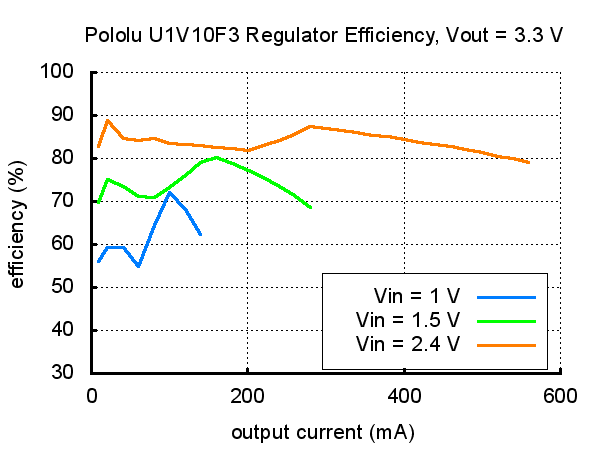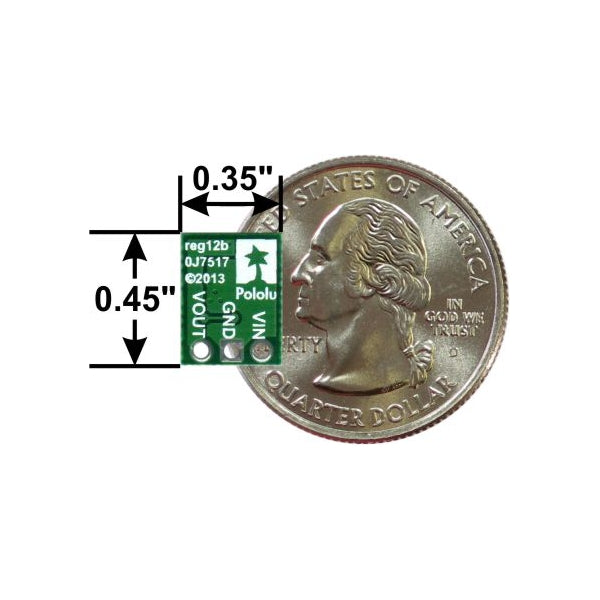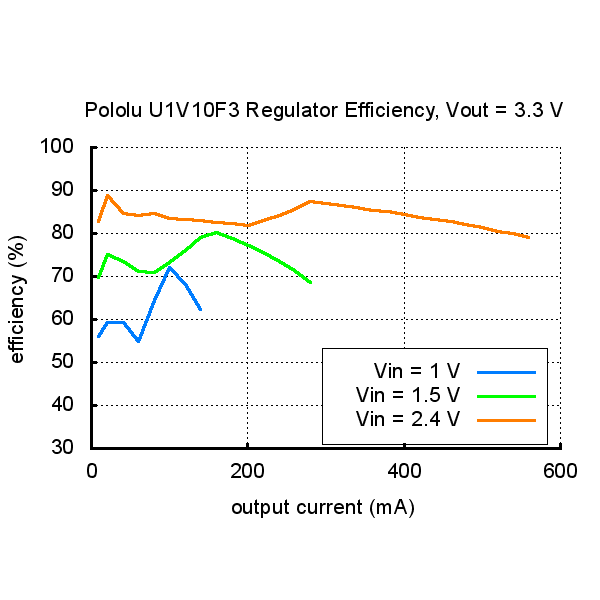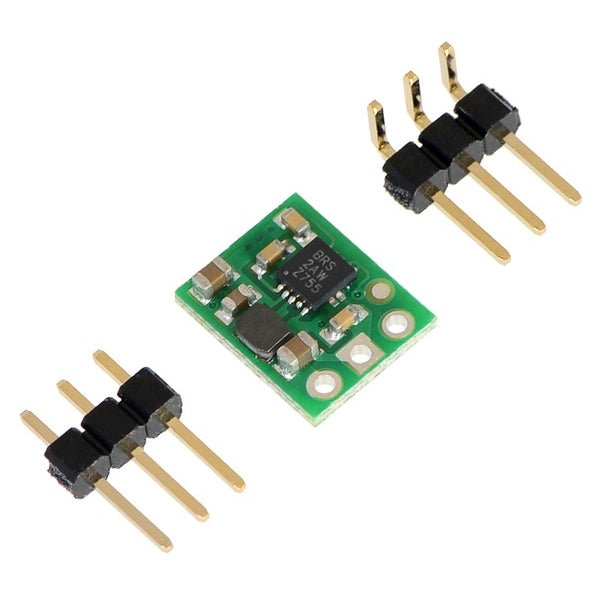Description
This 3.3 V boost (step-up) voltage regulator generates higher output voltages from input voltages as low as 0.5 V, and it also automatically switches to a linear down-regulation mode when the input voltage exceeds the output. This makes it great for powering 3.3 V electronics projects from 1 to 3 NiMH, NiCd, or alkaline cells or from a single lithium-ion cell.
When boosting, this module acts as a switching regulator (also called switched-mode power supplies (SMPS) or DC-to-DC converters) and has a typical efficiency between 65% to 85%. The available output current is a function of the input voltage, output voltage, and efficiency (see Typical Efficiency and Output Current section below), but the input current can typically be as high as 1.2 A. This regulator is also available with a fixed 5 V output, and very similar 3.3V, 5V, and adjustable-output versions are available with a true shutdown option that turns off power to the load.
The regulator?s thermal shutdown engages at around 140°C and helps prevent damage from overheating, but it does not have short-circuit or reverse-voltage protection.
Features
- Input voltage: 0.5 V to 5.5 V
- Fixed 3.3 V output with 4% accuracy
- Automatic linear down-regulation when the input voltage is greater than the output voltage
- 1.2 A switch allows for input currents up to 1.2 A
- Good efficiency at light load: <1 mA typical no-load quiescent current, though it can exceed 1 mA for very low input voltages
- Integrated over-temperature shutoff
- Small size: 0.35? × 0.45?; × 0.1? (9 × 11.5 × 2.5 mm)
The three connections are labeled on the back side of the PCB, and they are arranged with a 0.1? spacing along the edge of the board for compatibility with solderless breadboards, connectors, and other prototyping arrangements that use a 0.1? grid. You can solder wires directly to the board or solder in either the 3×1 straight male header strip or the 3×1 right-angle male header strip that is included.

Typical Efficiency and Output Current

LC Voltage Spikes
More information about LC spikes can be found in our application note, Understanding Destructive LC Voltage Spikes.
Specifications:
- Size: 0.35? × 0.45? × 0.1?1
- Weight: 0.4 g1
- Minimum operating voltage: 0.5 V
- Maximum operating voltage: 5.5 V
- Maximum input current: 1.2 A2
- Output voltage: 3.3 V
- Reverse voltage protection?: N
- Maximum quiescent current: 1 mA3
- 1. Without included optional headers.
- 2. Regulator may overheat at lower input currents when VIN is much lower than VOUT. Available output current is a function of VIN, VOUT, and the regulator efficiency.
- 3. The highest quiescent currents occur at very low input voltages; for most of the input voltage range, the quiescent current is well below 1 mA.
Encrypted payment
Your payment information is processed securely. We do not store credit card details nor have access to your credit card information.
Customs Tariff Number:
Country of origin:
This depends on where you are located. After the order is handed over to UPS, the delivery time in Germany is about 2-3 days, within Europe about 1 week.
We ship our orders with UPS (United Parcel Service).
If we still haven't answered your question, you can contact us below and we will get back to you as soon as possible.





